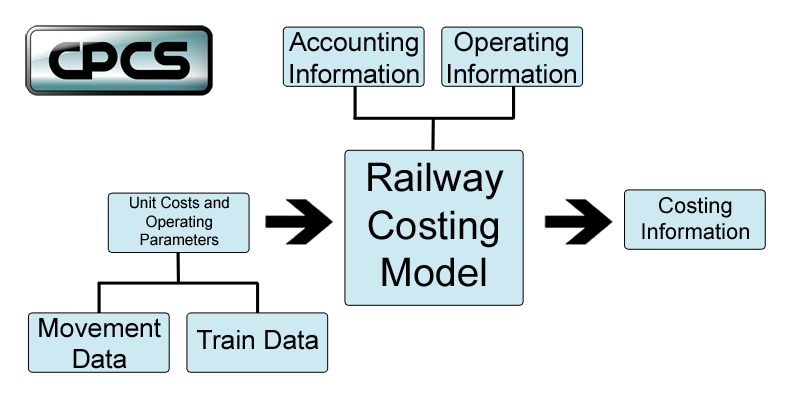OSCAR railway costing
OSCAR (operational simplified costing analysis for railways) is a railway costing model which was developed by CPCS Transcom Limited in Canada. Developed with World Bank funding, it is currently being used by almost 20 railways throughout Africa and Asia. OSCAR is used as a tool to help railway companies understand the cost of doing business. Railway companies use OSCAR to set appropriate tariffs, reduce costs, and rationalize service. OSCAR can be used for passenger, rail, and mixed systems.
Railway costing
Railway costing is the calculation of the variable and fixed cost components of rail movements. Due to the vast array of data that can be used in the calculations, railway costing is typically done using a mathematical model like OSCAR For example, OSCAR would be able to calculate the cost of shipping 80 tonnes of coal from Point A to Point B, or the cost of moving 3000 passengers from Point C to Point D.
The OSCAR model will estimate the variable costs of a railway due to the movement of traffic, the provision of a service, or a variety of other factors. Once costs are determined, appropriate tariffs can be set to generate the revenue necessary to offset the chosen cost level (plus profit). OSCAR can also be used for line analysis and investment analysis.
Cost categories
The costs output by the OSCAR model are classified into four categories:
- direct variable costs: costs that fluctuate with the operations of the railway. such costs would include fuel, train crew, traffic cost, yard & terminal cost, rolling stock and infrastructure maintenance.
- variable operating costs: include the direct variable costs with depreciation attributed to the shipment (freight or passengers).
- total long term variable costs – include the variable operating costs and the cost of capital, or borrowing costs.
- total costs: include the long term variable costs plus fixed costs and profit.
Tariffs
When setting a tariff it is desirable to set it such that the revenues would recover all costs plus profit; however, current market forces may not permit such tariffs. Tariffs may not be reflective of the costs on all segments of the railways because costs will vary by segment. As a result, the railway may operate at a loss in one area while in another operate with a large profit thus balancing out. If the railway can not cover even the Direct Variable Cost, given the market conditions, then perhaps the decision might be to forgo this traffic altogether. Alternatively decision-makers could ask what measures could be taken to reduce the cost, so that the revenue will offset the cost.
Diagram
A simplified block diagram of OSCAR is provided below. The model takes various operating, accounting, movement, and train parameters as input and provides costing information as output.
Examples
There are many examples where OSCAR can provide critical cost saving analysis. One example would be determining the benefit of adding grades in a shunting yard. Will the reduction in time spent shunting locomotives benefit the rail network economically for the years to follow? Or if a new signaling system was added allowing for increased speed limits, would the benefits out-weigh the costs?
External links


